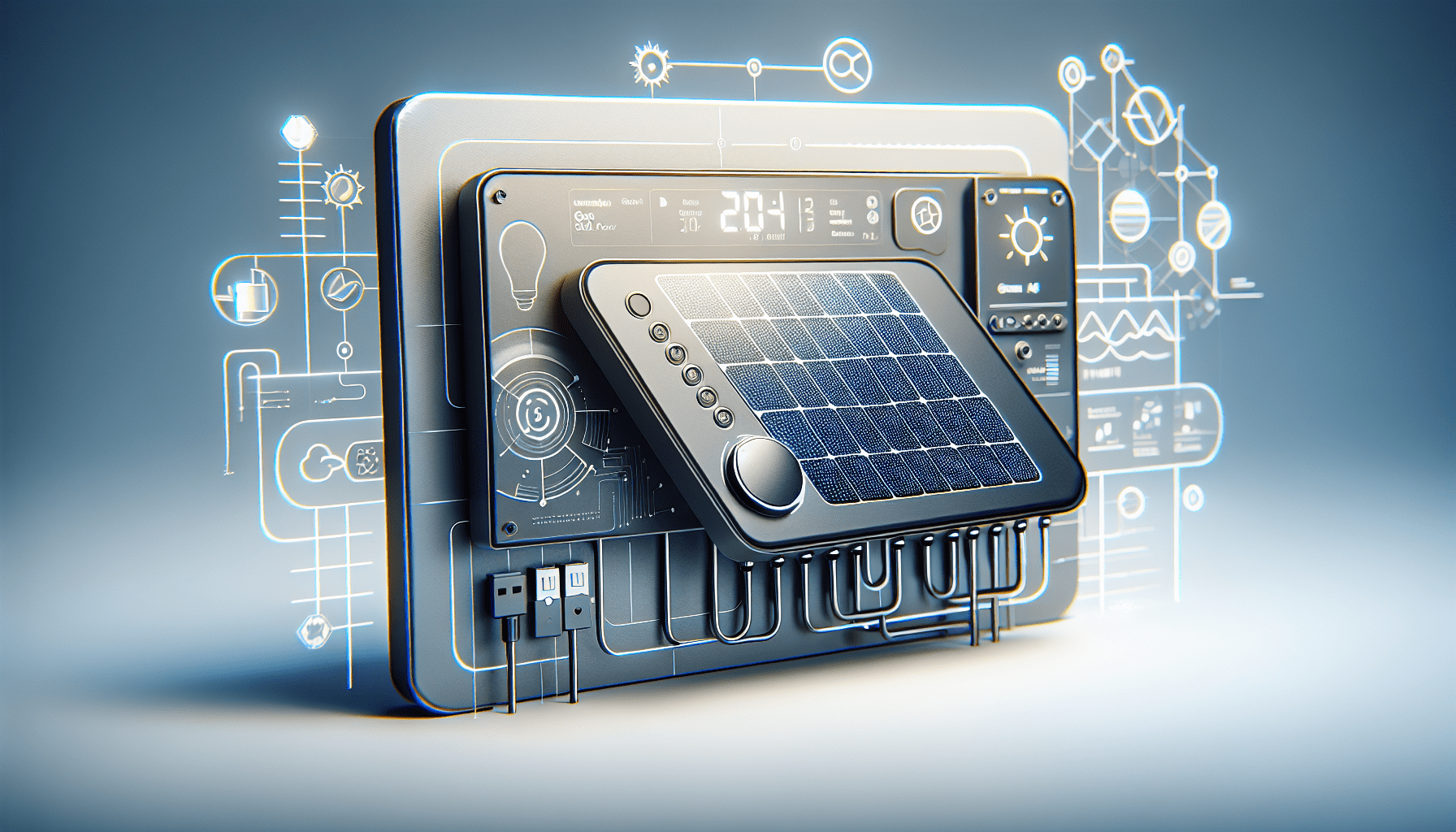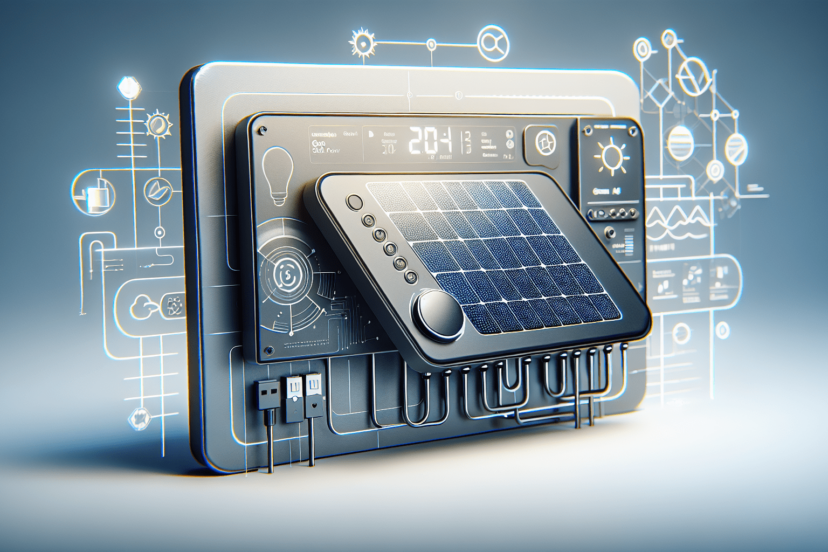Understanding the Go Power Solar Controller
As an Amazon Associate, I earn from qualifying purchases, at no additional cost to you. Disclaimer
Have you ever wondered how the sun’s energy gets transformed into usable power for your home, RV, or off-grid setup? In our daily pursuit of sustainable energy solutions, understanding key equipment like the Go Power Solar Controller is essential. Let me walk you through the ins and outs of this important device, ensuring you’re well-prepared to harness the sun’s energy more effectively and efficiently.

Click Here to Go Solar and Save
What is a Go Power Solar Controller?
The Go Power Solar Controller is an essential component designed to manage the electricity generated from solar panels. Its primary function is to regulate the voltage and current coming from your solar panels to the batteries. This protects your batteries from overcharging, ensuring a longer life span and optimal performance.
Key Features of the Go Power Solar Controller
Understanding the features of the Go Power Solar Controller can help you make the most of it. Here are some of its primary features:
- System Voltage Recognition: It automatically detects whether the system is running on a 12V or 24V system, offering flexibility depending on your setup.
- Protection Mechanisms: Protects against overcharging, over-discharging, overload, and reverse polarity, keeping your entire solar power system safe.
- User-friendly Interface: With an intuitive interface, it allows you to effortlessly monitor your solar energy production and consumption.
- Temperature Compensation: Adjusts the charge parameters automatically based on the ambient temperature to prevent battery damage.
Why Do I Need a Solar Charge Controller?
A solar charge controller like the Go Power is crucial for ensuring the longevity and efficiency of your solar power system. Without it, the fluctuating current from your solar panels could damage your battery. Let’s look at why it’s indispensable:
- Prevents Overcharging: By managing the amount of energy that goes into your battery, it stops the battery from receiving more power than it can handle.
- Improves Battery Life: Regulating the flow of electricity helps maintain your battery in top condition, thereby extending its operational life.
- Enhances System Efficiency: By optimizing the charge, you ensure that every solar unit is utilized effectively.
- Safety: It reduces the risk of battery leaks, fires, or explosions, ensuring safe operation.
Click Here to Power Your Home with Solar
Types of Solar Charge Controllers
Understanding the different types of solar charge controllers helps in selecting the right one for your specific needs. Generally, they are classified into two main types:
Pulse Width Modulated (PWM) Controllers
PWM controllers are the traditional type and are known for their simplicity and durability. They work by slowly reducing the amount of power provided to the batteries as they approach full charge.
- Pros: Cost-effective, reliable, and suitable for small to medium systems.
- Cons: Less efficient with larger systems and may require close placement to the battery bank.
Maximum Power Point Tracking (MPPT) Controllers
MPPT controllers are more advanced and capable of adjusting their input to harvest more power effectively. They monitor the voltage output of the solar panel to ensure the maximum amount of power is transferred to the battery.
- Pros: Highly efficient and more capable of handling larger setups.
- Cons: More expensive, though the efficiency gains can make up for the initial cost over time.
How to Choose the Right Go Power Solar Controller?
Selecting the right controller requires understanding your unique energy needs. Here are key factors to consider:
Consider Your Power Needs
Determine the average power usage for your setup. This involves calculating your total energy requirement and ensuring the controller can handle this in terms of amperage and voltage.
System Voltage
Verify the voltage requirements of your solar panels and batteries to ensure compatibility with the controller, whether 12V, 24V, or higher.
Budget
While MPPT controllers are advanced, they come with a higher price tag. If your budget is tight and your setup is smaller, a PWM controller might be sufficient.
Environment
Consider the environmental conditions where you plan to use the solar controller. For example, if you expect extreme temperatures, a controller with robust temperature compensation features is recommended.

Click Here to Discover Solar-Powered Solutions
Installation and Setup of the Go Power Solar Controller
Installing a solar charge controller is a straightforward yet vital process to get your solar power system running. Here’s how you can set it up with simplicity and confidence.
Steps for Installation
- Mount the Controller: Choose a dry, ventilated space and mount the controller to avoid water and direct sunlight exposure.
- Connect the Battery: Always connect the battery to the controller before connecting the solar panel to prevent any electrical shorts.
- Attach the Solar Panel: Ensure all connections are tight and secure. Most Go Power controllers have clear labeling for ease.
- System Monitoring: Once everything is securely connected, check the controller display to verify the system is operational and parameters are correct.
Safety Tips
- Use Proper Wiring: Ensure wire sizes are adequate for the current to prevent overheating.
- Double-check Connections: Incorrect polarity can damage equipment, so check twice before turning on the system.
- Regular Inspections: Periodically inspect the controller and all connections for signs of wear or damage.
Maintaining Your Go Power Solar Controller
Maintaining your Go Power Solar Controller is crucial for prolonged efficiency and reliability. Here’s how to ensure it remains in optimal condition:
Regular Cleaning
Dust and debris can accumulate over time, potentially affecting performance. Wipe the exterior with a dry cloth and ensure vents are clear to prevent overheating.
Consistent Monitoring
Regularly check the controller’s display to monitor performance metrics and ensure it’s functioning correctly. Early detection of anomalies can prevent more significant issues.
Firmware Updates
If applicable, keep your controller’s firmware updated to benefit from advancements and improvements provided by the manufacturer.
Battery Care
Check the battery connections and condition routinely. Proper maintenance of the battery will consequently benefit the controller’s operation.
Troubleshooting Common Issues
Understanding common problems and resolutions keeps your solar controller and system running smoothly. Here are some typical issues you might encounter:
Low Voltage Reading
This could be caused by poor solar panel performance or bad battery connections. Ensure panels are not shaded and battery connections are tight.
Controller Not Turning On
Check all connections first. If there are no installation errors, look into potential issues with the power source; the solar panel or battery may be faulty.
Overcharging Batteries
Review the controller settings to ensure it’s configured correctly. The temperature sensor, if available, should also be checked for malfunction.
Benefits of Using a Go Power Solar Controller
Using a Go Power Solar Controller brings numerous advantages in managing solar energy effectively:
- Optimized Energy Use: It maximizes the energy harnessed from solar panels, supporting sustainable energy goals.
- Reduced Fossil Fuel Dependence: A well-managed solar system can reduce or even eliminate reliance on non-renewable energy sources.
- Environmentally Friendly: Utilizing solar power significantly reduces the carbon footprint, contributing to a greener planet.
- Cost Savings: Long-term savings on electricity bills and reduced maintenance costs for batteries and solar panels.
Real-life Applications of Go Power Solar Controllers
The versatility of Go Power Solar Controllers makes them suitable for a wide array of applications:
Residential Use
Ideal for home solar power systems aiming to minimize grid dependency. The controller ensures home batteries are used efficiently, storing excess solar energy for nighttime or cloudy days.
Recreational Vehicles (RVs)
Perfect for RV enthusiasts who enjoy boondocking—camping without hookups. The controller enables consistent energy supply by managing solar power input effectively.
Off-grid Sites
For remote cabins or homes without access to the electrical grid, Go Power Solar Controllers provide a reliable energy management solution.
Commercial Installations
Small businesses striving for sustainability can use these controllers to manage solar power systems, reducing energy overheads.
Comparing Go Power Solar Controllers to Other Options
When making a choice, comparing the Go Power Solar Controllers to other brands and options can be insightful. Here’s a comparative view:
| Feature | Go Power Solar Controllers | Other Brands |
|---|---|---|
| Efficiency | High, especially with MPPT | Varies, often dependent on model |
| User Interface | Intuitive and user-friendly | Often less user-centric |
| Cost | Mid to high range | Wide price range, sometimes cheaper |
| Durability | Robust build for long life | Varies, some may compromise on quality |
| Support and Updates | Regular support and updates | Varies, not all offer updates |
Future of Solar Controllers
As technological advancements continue, the future looks bright for solar controllers. Developments in energy efficiency, integration with smart home systems, and enhanced data analytics capabilities promise more convenience and control over solar energy use.
Innovations to Anticipate
- AI Integration: Controllers that learn energy consumption patterns and optimize energy saving.
- Increased Connectivity: Bluetooth or Wi-Fi enabled devices for remote monitoring via mobile apps.
- Smart Grid Solutions: Interactive with power grid systems for enhanced energy management.
In summation, the Go Power Solar Controller stands as a cornerstone in the realm of sustainable energy solutions. With advanced features, user-friendly interfaces, and reliable performance, it supports efficient energy management, making it a worthy investment for anyone committed to reducing their carbon footprint while optimizing their solar power systems. By understanding its functionalities, proper installation, and maintenance, you can fully leverage its capabilities to power your way towards a greener future.

